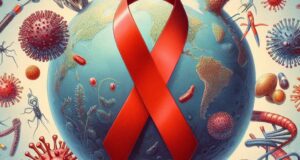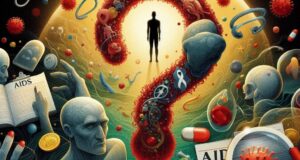In the darkest hours of any storm, there are always sparks — small, defiant flames that refuse to die out. When the AIDS crisis gripped the world in a cold silence of fear, ignorance, and shame, it was activism that ignited those first sparks of light. It was the roar against silence, the march against stigma, and the fight for truth that began answering the haunting question: AIDS — where did it come from?
were the warriors of the AIDS movement. Their enemy was not only a virus but a much older foe: indifference. Governments hesitated, media sensationalized, and society turned its back. But activists turned pain into power.
In the early 1980s, when whispers of a deadly illness circulated, many asked, “AIDS — where did it come from?” Instead of scientific clarity, they were met with judgment and silence. Patients were left to die alone. Hospitals refused care. Funeral homes turned families away.
Organizations like ACT UP (AIDS Coalition to Unleash Power) and GMHC (Gay Men’s Health Crisis) weren’t born in boardrooms; they were born in grief, anger, and desperation. They stormed the steps of the FDA. They lay down in streets with slogans like “Silence = Death.” They disrupted political events not for fame, but to save lives. To these activists, the question “AIDS — where did it come from?”
Their tactics were bold, even controversial. But their impact? Unmistakable. Life-saving medications that once took a decade to get approved were fast-tracked. Research funding skyrocketed. Stigma began to erode, one protest at a time. These movements turned AIDS from a taboo into a topic of national — and eventually global — urgency.
Metaphorically, activism was like a lantern carried through a foggy night. Each step lit by the voices of the marginalized, the rejected, the sick — and their allies. Their flame illuminated what governments refused to see: that AIDS wasn’t a disease of “others,” but a global human crisis. It didn’t matter where AIDS came from if no one was willing to confront where it was headed.
One of the most powerful aspects of the AIDS activism movement was its ability to humanize the epidemic. Campaigns focused on names and faces: “This is David. He loved art. He died at 27.” These weren’t statistics; they were sons, daughters, lovers, teachers, and friends. Activism peeled back the labels — gay, addict, hemophiliac — and showed the humanity underneath.

With time, the message evolved. Activists expanded their efforts globally, calling out disparities in treatment between rich and poor nations. They fought for access to antiretrovirals in Africa, where AIDS was decimating entire communities. The battle cry shifted: from “Who gave us AIDS?” to “Who is still being denied a chance to fight it?”
Even today, the legacy of those early activists echoes. Every awareness walk, every red ribbon pinned on a shirt, every policy that protects people living with HIV — these are embers from that original fire. That fire refuses to go out.
So when people still ask today, “AIDS — where did it come from?”, It is etched in the chalk outlines on sidewalks, in protest signs drenched with rain and tears, in voices that rose when silence was more convenient. It is found in the activism that said, we will not be invisible.

And because they stood, we now know. Because they marched, we now speak. Because they fought — we now hope.




